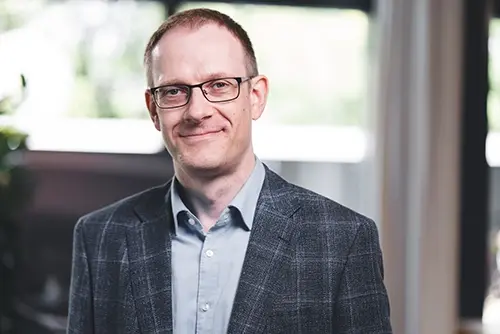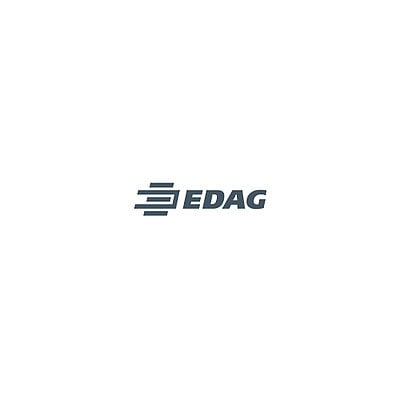Agriculture is under pressure: a growing global demand for food is facing restrictions due to climate change, resource scarcity and environmental pollution, as well as constant price pressure. Crop cultivation must therefore become more productive as well as more economical and sustainable. The solution lies in comprehensive digitalization. Smart farming should be understood as a holistic approach that combines technology, data analysis and industry-specific expertise. This is the only way to achieve all the goals set at the same time.
Steadily rising prices at farmers' markets and in grocery stores reflect not least the effects of climate change. Sometimes harvests are destroyed by catastrophic rainfall, sometimes yields are reduced by prolonged drought. However, a world population that continues to grow needs more rather than less food.
At the same time, conventional agriculture is held responsible for various environmental damage: increased species extinction as a result of the use of pesticides, pollution of drinking water through fertilizers and liquid manure as well as falling groundwater levels in regions where unbridled irrigation from wells takes place.
Innovative cultivation methods
One approach to making food production less dependent on capricious weather conditions and saving CO₂ by shortening transportation routes is new forms of cultivation. These include indoor farming and vertical farming, which are optimized for limited space. In indoor farming, plants are grown in controlled indoor spaces where light, temperature and nutrients are precisely regulated. Soilless forms of cultivation are often used, such as hydroponics, in which plants grow without any soil in a nutrient-rich water solution, or aquaponics, which combines hydroponics with aquaculture (fish farming). Vertical farming goes one step further by using multiple levels to grow vertically. This is often practiced in high-rise buildings or specially constructed structures.
Another alternative is urban farming and rooftop farming. Urban farming refers to the cultivation of food within urban spaces. This can take place on previously unused fallow land, in backyards, community gardens or even inside buildings. Rooftop farming is a special form in which food is grown exclusively on flat roofs, for example on discount stores and other commercial properties. Raised beds, greenhouses or even small farms with aquaponics systems are used as growing areas.
Success through digitalization
Indoor farming cannot do without sophisticated control systems, as light, water, temperature and nutrient input must be regulated by technical means depending on the form. But technologies such as the Internet of Things (IoT), sensor technology and data analysis also help to optimize yields and make farming more sustainable in outdoor farming by improving the efficiency of irrigation, fertilization and pest control. Potential areas of application include:
- Smart irrigation systems: sensors monitor soil moisture and weather data, earth observation satellites provide remote sensing data and a better understanding of how to use water efficiently and avoid over-irrigation.
- Precision fertilization: IoT and data analysis enable a needs-based nutrient supply that is reduced to a necessary minimum and reduces environmental pollution.
- Cycles and resource efficiency: Smart systems promote the use of plant residues and waste for nutrient recycling for sustainable material cycles and minimize the use of contaminated liquid manure and synthetic fertilizers.
- Smart lighting control: Indoor farms benefit from precisely adjusted lighting that promotes plant growth and minimizes energy consumption.
- Silo monitoring and control: silo sensors record fill levels, storage temperatures and humidity in real time. Automated alerts and reordering increase efficiency and prevent losses.
- Early pest detection: cameras and drones, supported by artificial intelligence (AI), identify infestations at an early stage and enable targeted countermeasures to be taken, ideally without the need for pesticides.
- Crop rotation management: Digital twins support the planning and optimization of crop rotations in order to maintain soil fertility.
Comprehensive data platform as a basis
Smart agriculture is based on the integration and harmonization of data from various sources in a central data platform. It is fed with sensor data, weather data and forecasts as well as satellite data. This data forms the core of smart farming. It is analyzed by intelligent algorithms to identify patterns and make informed decisions. With Digital twins, virtual images of farms can be created that simulate scenarios and show optimization possibilities.

Figure 1: Sensors help to optimize teh efficiency of irrigation, fertilization and pest control in both indoor and outdoor cultivation.
A key aspect of smart farming is the integration of different requirements. After all, smart farming is more than just the digitalization of individual processes - it is a holistic approach that encompasses all aspects of agriculture.
Support from experienced partners
The design, planning and implementation of smart farming projects requires in-depth expertise in various key areas. EDAG Production Solutions can offer comprehensive support, as the EDAG Group brings together all the necessary digital expertise under one roof. For example, in the field of IoT and sensor technology, in the development and integration of systems for real-time data acquisition and monitoring for the precise control and automation of complex processes. Or in data harmonization and analysis, when different data sources need to be brought together and intelligent algorithms used to support decision-making.
The same applies to the creation and use of digital twins, i.e. virtual images for simulating, optimizing and increasing the efficiency of operational processes. And last but not least, in project management and general contracting. The specialists at EDAG PS are characterized by many years of experience in managing complex projects and collaborating with interdisciplinary partners.
Would you also like to find out more about the potential of digitally optimized agriculture? Then talk to our expert Nico Marzian, Project Manager & Business Development Manager Smart City & Smart Infrastructure. He can also advise you on options for other smart city topics, such as smart traffic management, smart water management and smart waste management. You can also download our white paper "Smart Farming - Efficient cultivation away from the field" here, which highlights the possibilities of modern agriculture and also presents other practical applications.






